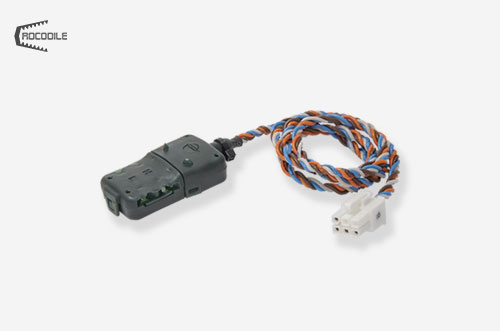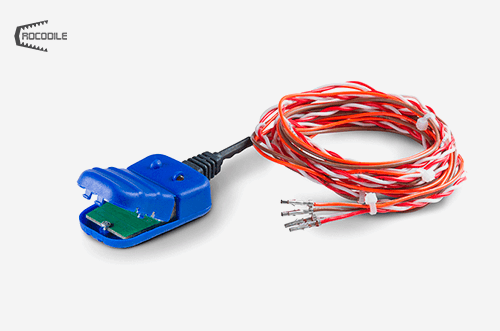Contactless readers
Contactless CAN j1939 bus reader
CANCrocodile is designed for safe data reading from vehicle CAN bus. Contactless reader is used within vehicle telematics and GPS tracking systems for receiving various parameters of vehicle operation from CANbus: speed, RPM, oil pressure & temperature, fuel volume & consumption, etc.
Contactless J1708 (SAE J1587) bus reader
1708Crocodile is designed for safe data reading from J1708 bus (SAE J1587) of vehicles. Contactless reader is used within vehicle telematics and GPS tracking systems for receiving various parameters of vehicle operation from the bus: speed, RPM, oil pressure & temperature, fuel volume & consumption, etc.
Contactless FMS gateway
FMSCrocodile is used within for vehicle telematics system as a ready-made solution for safe integration of data from one or more automotive buses into CAN/S6 Telematics Interface. FMSCrocodile allows to obtain a large number of vehicle operating parameters via just one CAN-port of telematics unit.
Frequently Asked Questions
Crocodile and CrocoLITE contactless readers capture signals from CAN J1939 or J1708 data buses of a vehicle’s or stationary machine’s electronic control units and transmit them to a telematics device of vehicle GPS tracking or a CAN display. The collected data can be used on-board by the operator to select the optimal operating mode for the machinery, or transmitted to an online fleet management system.
- CANCrocodile — contactless reader for signals from a CAN J1939/21 bus standart.
- CANCrocodile Mini — a more compact and energy-efficient version of CANCrocodile, with a lower message loss rate.
- CANCrocoLITE — board-level reader for CAN J1939/21 bus signals, сonvenient for installation in dense wire harnesses.
- FMSCrocodile — contactless reader for FMS group (CAN J1939/71) messages on the CAN bus. Filters the CAN traffic to pass only FMS-related messages and can independently generate the “Trip Fuel Used, L” parameter based on SPN 183 “Instantaneous Fuel Rate, L/h.”
- 1708Crocodile — contactless reader for signals from a CAN J1708 bus, also applicable for reading RS-485 signals.
- NozzleCrocodile — contactless reader of control signals from gasoline engine fuel injectors.
When a GPS tracking telematics device is directly connected to the CAN H and CAN L wires of a J1939 bus, the wire insulation is damaged, creating a direct electrical contact with the machine’s electronics. This can lead to ECU errors, trigger service mode with reduced equipment performance, and void the manufacturer’s warranty.
CANCrocodile connects to the CAN bus without electrical contact, remaining “invisible” to the ECU and having no impact on the machine’s electronics. If removal is required, CANCrocodile leaves no marks on the wiring.
Yes, CANCrocodile and CANCrocoLITE can be used to read signals from a passenger car’s CAN bus, provided it is a CAN 2.0B (CAN J1939/21) data bus and the data transfer rate matches the device specifications. Signal decoding (i.e., conversion into parameter values) is performed by the terminal device, which must support the relevant high-level protocol (CAN J1939/71).
The message loss rate is a specification of the Crocodile device indicating that it transmits over 99% of all signals detected on the CAN bus. In most telematics applications, even 95% is sufficient — parameters such as engine RPM, coolant temperature, and oil pressure are transmitted several times per second, so the loss of a single message does not distort the overall picture of equipment operation. However, for research purposes or predictive maintenance implementation, the fewer the losses (and the more complete the data), the better the results.
No, CANCrocodile (1708Crocodile) is designed for CAN J1939 (J1708) data buses only.






